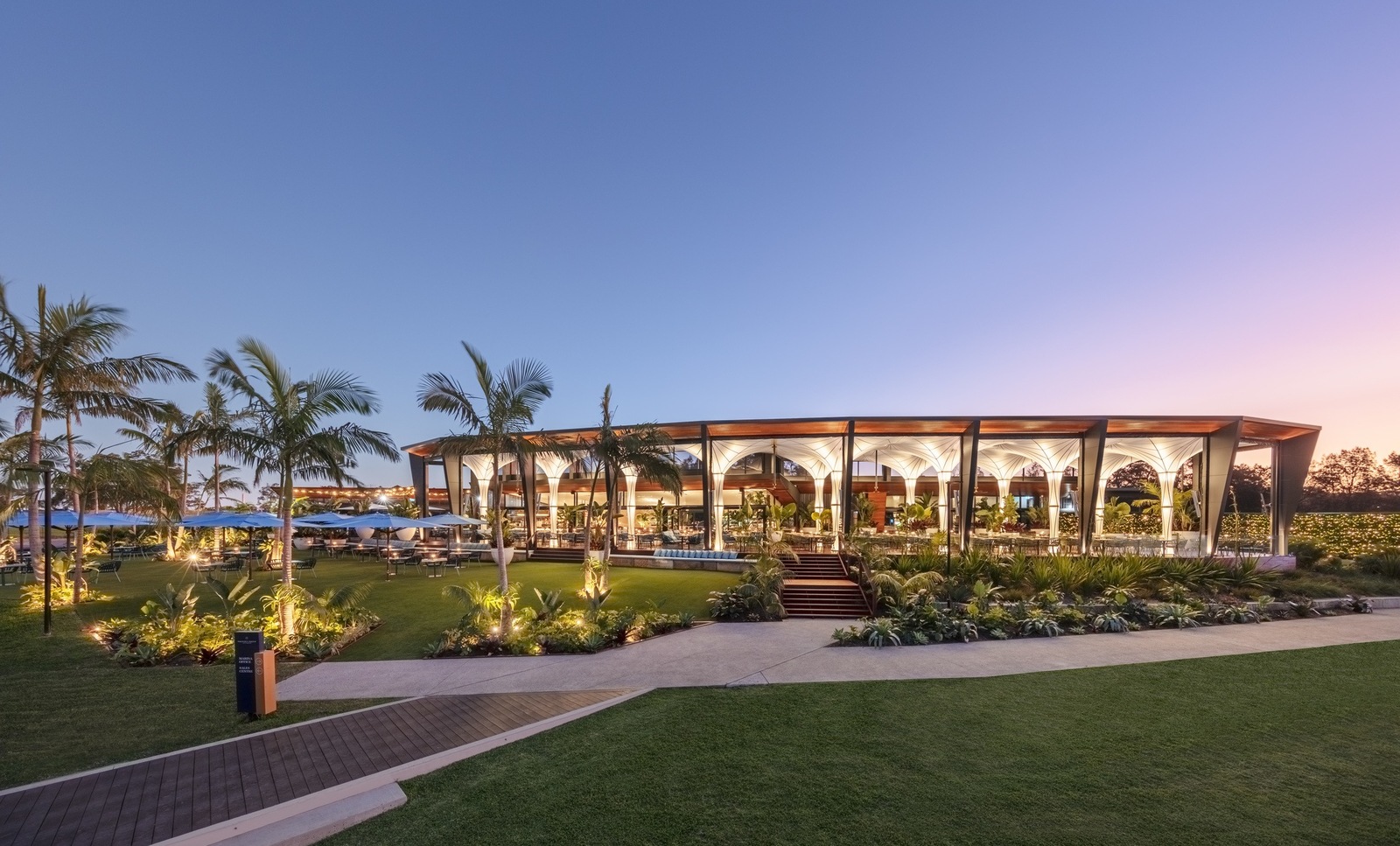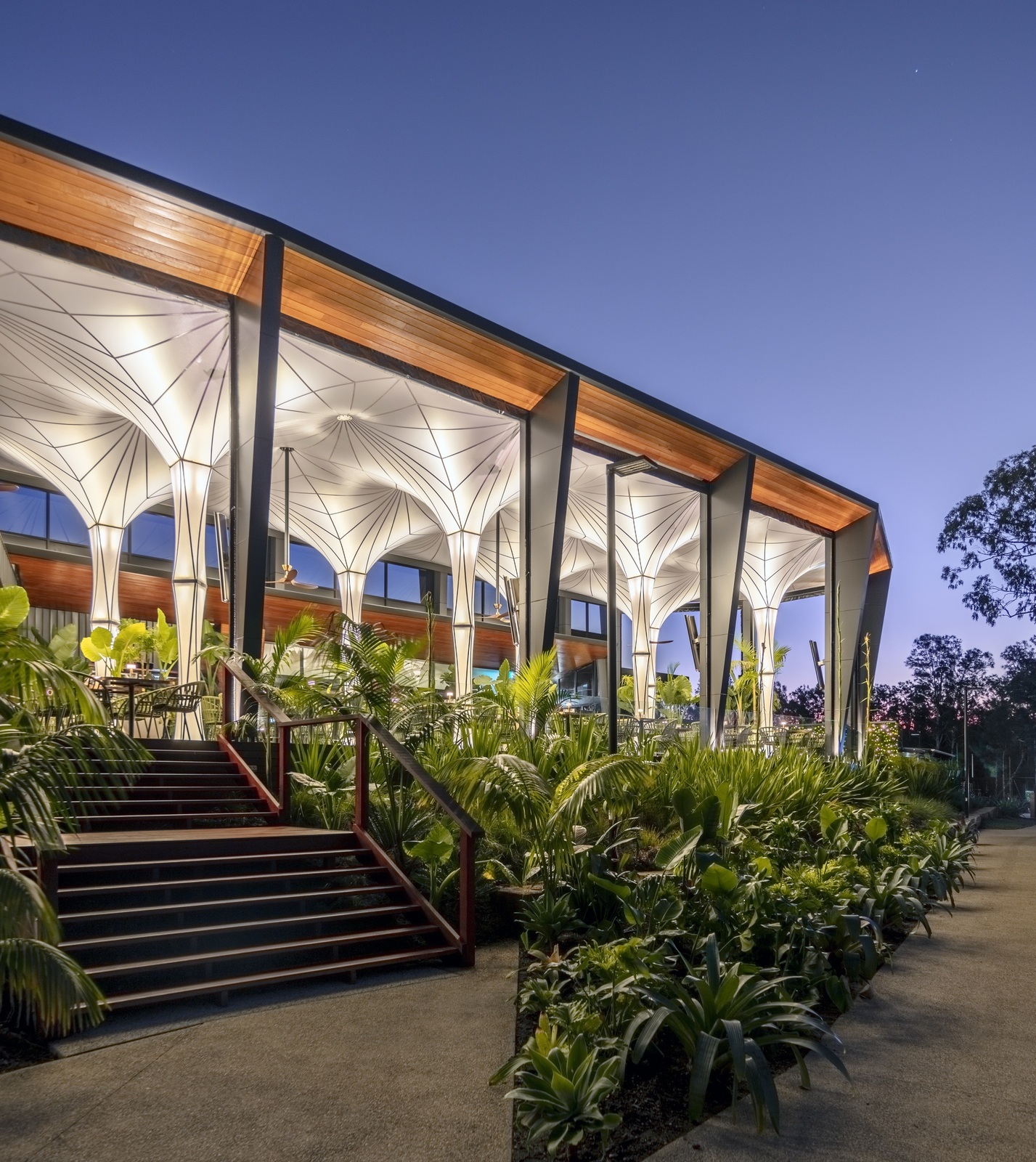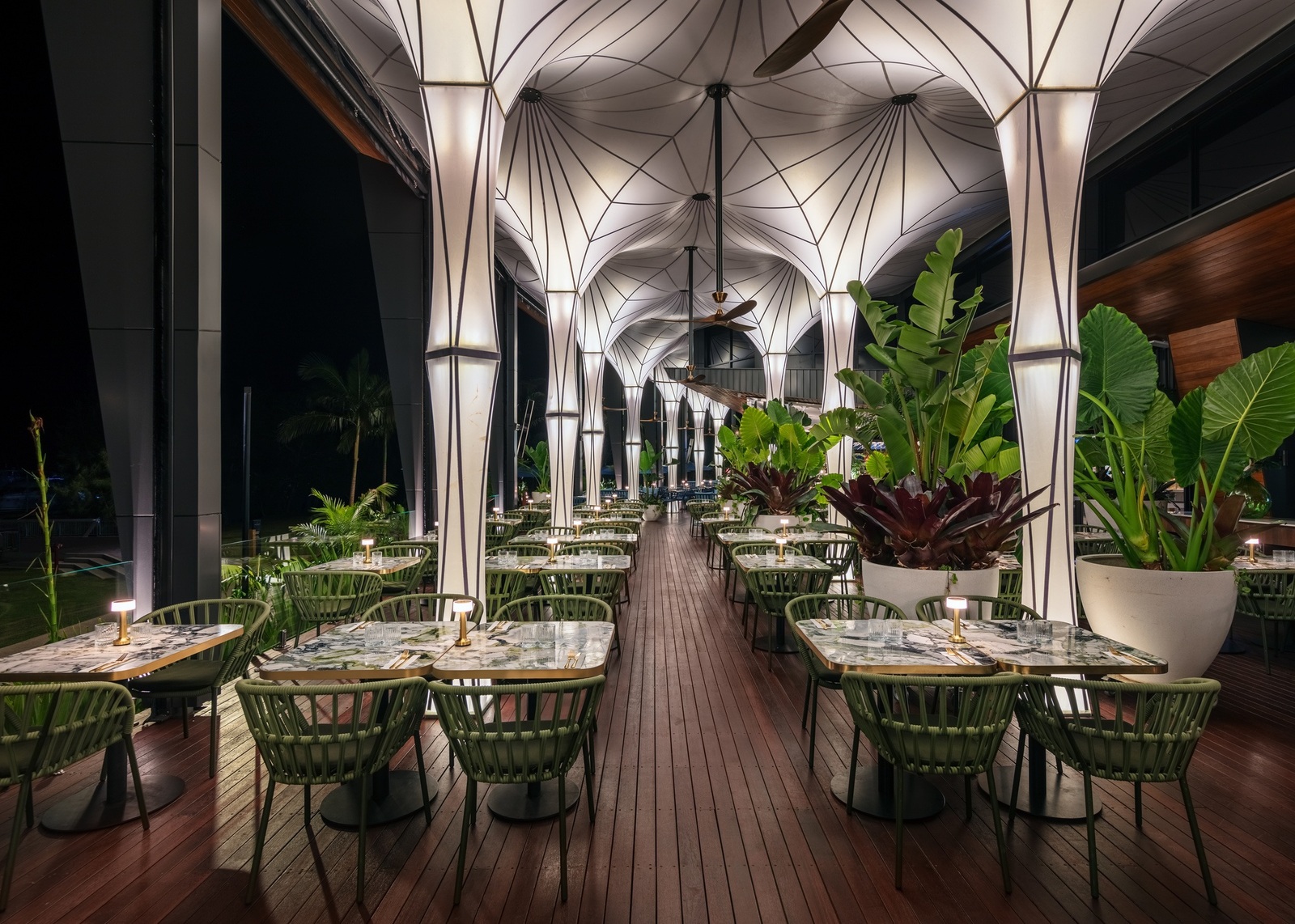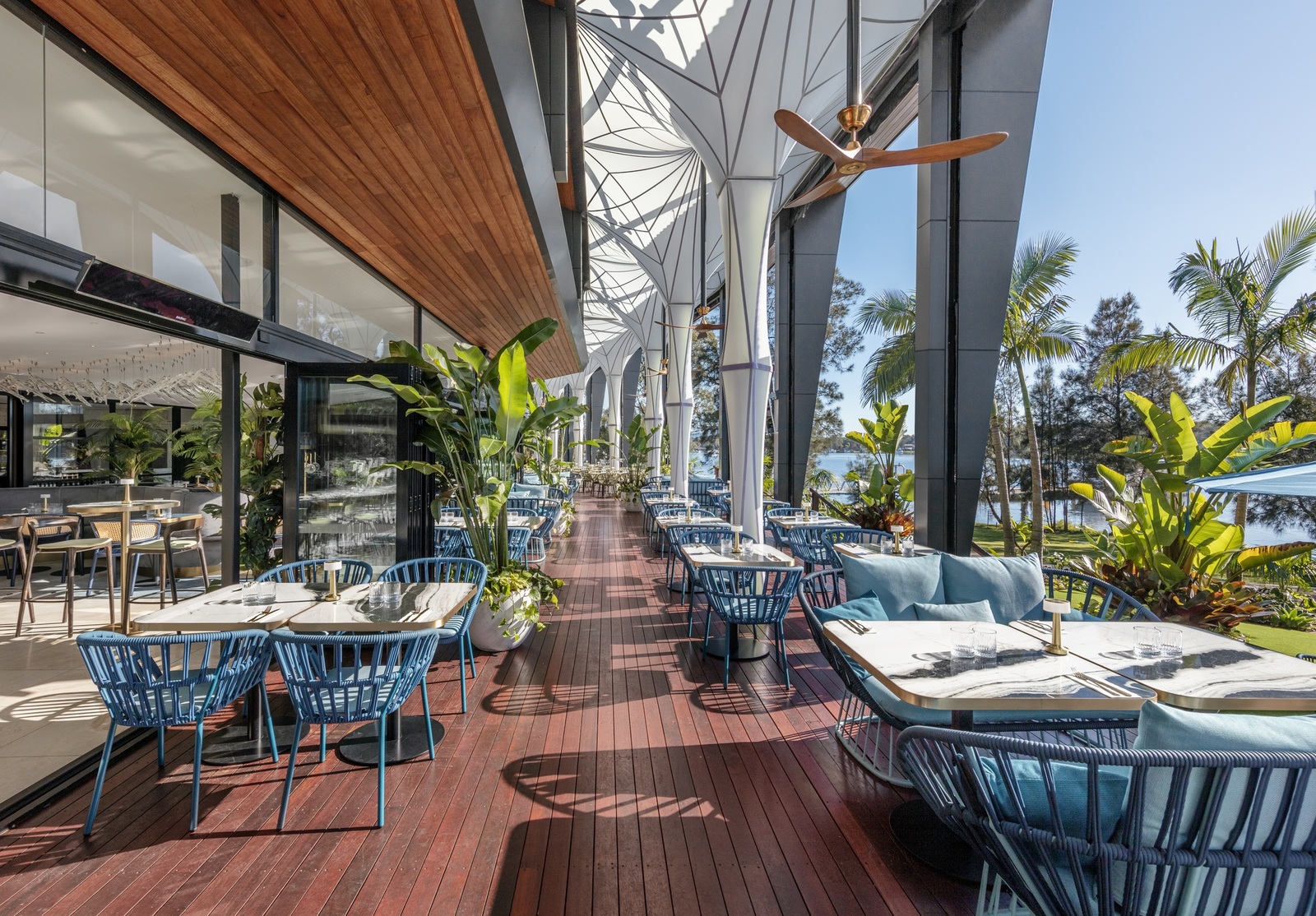PROJECT
Project specifications
We were approached by our client to design, fabricate and install a stunning fabric membrane roof system for a new restaurant and development on the Central Coast. The brief was to create a structure that would ‘wow everyone that sees it.’
The structure, designed by Charlie Hearn of Inspiral Architects, was designed to provide extensive coverage to maximise the outdoor dining area table space and increase revenue for the restaurant.
Unique challenges
Unlike most tension membrane structures, the vision for this structure was for all steelwork to be hidden, to allow focus to fall on fabric curves and angles.
This hidden framework needed to accommodate an intense lighting system and be completely freestanding.
The membrane needed to respond to several specific conditions: it needed to be able to collect water for irrigation and in a way that looked like a waterfall in heavy rain; it had to be fully waterproof yet provide access for lighting maintenance inside fabric columns, and the seams to be fabricated in a way that created strong geometric shapes.
A significant challenge for this project was staffing shortages and restrictions due to COVID-19, coordinating highly skilled specialists, supply delays to regional NSW, and working through one of the wettest summers on record.
Solution
In order to hide the steel frame and feature the fabric and seams, our solution was to build this structure in reverse order – fabric and then frame.
Our solution involved fabricating the membrane prior to the steel being installed. The material we chose was Hiraoka Sundream, a high translucent PVC. The complex geometry of the membrane, and the need for it to be watertight and wrinkle-free, meant each of the panels were patterned individually and then needed to be plotted before manufacturing could take place.
A unique part of our solution was the approach to seams. The design called for seams to be featured, not hidden. In response we created detailed fabrication techniques to avoid having bunched weld bleeds at seam intersections.
The installation sequence required precision timing of contractors. First, we laid the fabric on the deck of the restaurant, then craned in the steel frame and assembled it piece by piece, over the fabric, ready to build through the small openings of the tension membrane conics.
After this was complete, the electricians installed lights and power cables then tested and waterproofed their components.
Only when all of this was completed satisfactorily could we install the fabric. With barely 100mm between the narrowest sections of steel and conics, attaching all the connections meant working in testing conditions.
Design and fabrication of the steel work, along with the patterning of the material, needed to be millimetre perfect. There was no room for adjustment or any changes to the membrane after the steel was installed.
Every stage of design was triple-checked and extensive modelling was completed to make sure that everything would fit. There was only one chance to get this right with no room for mistakes.
Results
The result of all this work was a spectacular vibrant structure that creates beautiful natural light during the day, and a flamboyant illuminated ambience at night time.
The client was delighted with the end product. Customers walk into the restaurant and ask to be seated outside under this living structure. When they opened the outdoor area to the public in the new area their social media pages went crazy, bringing more and more people into the restaurant and creating the publicity the restaurant wanted.
For Pattons, the many challenges on this project stretched our team’s creative and logistical limits. As a result, we have greatly added to our specialist knowledge.
The amount of detail that went into every stage of this project was considerable: the design team spent months working with the brief to meet the needs of both client and the engineers; we spent many hours planning, managing and collaborating with all contractors, designers of all components, fabricators and installers to bring this vision to life.
Fortunately, there was a brilliant crew on hand to make this work happen, and we will let the incredible results speak for themselves.
This project was awarded Best Tension Structure by the international IAA and the STA.





